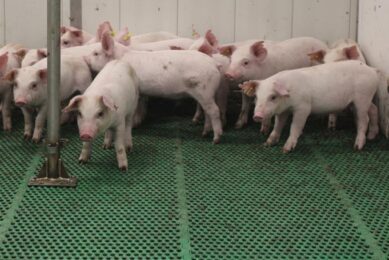Canada: Swine specialist optimistic about future
Leading veterinarian for OMAFRA (Canadian Ministry for Agriculture, Food and Rural Affairs), Dr Tim Blackwell, is confident about the pig industry’s future.
In a recent interview, he says that a pork producer must have an average of 12 pigs per sow born live, must market 25 pigs per year per sow, and use less than 2.8 pounds of feed per pound of gain in the finishing barn, to compete globally.
“Good news for Ontario producers is that the Netherlands and about 20 other countries would have to do better than that standard. These criteria would not cut it in a lot of European countries because of their costs of production.”
“This is very achievable in North America, and it may be true that only the top 15% of farms right now are achieving this.” What is interesting about these farms, he continues, is that they are not doing anything special.
Global consumption increase
Blackwell acknowledged that the pig industry hasn’t being doing well lately, but suggested that situation should soon turn around. He further suggested that land-based agriculture in Ontario will become the most profitable in the world.
“Meat consumption will continue to increase globally, not necessarily in North America, but globally we will be consuming more meat, and it’s going to be pork and chicken,” he predicts. He believes that pork specialty meats will become more popular.
Diseases
Blackwell seems equally optimistic about the prognosis of diseases that have pressured the industry for the past several years. He noted that PRRS (porcine reproductive respiratory syndrome) has received a lot of publicity in recent years.
“I think it’s important when you talk about health status and PRRS that you realise that PRRS is both a virus and disease,” he said. “You can have the virus and not have the disease… in fact, a lot of people, and they are the silent majority, have the virus but don’t have much disease to show for it.”
He comments further that producers should get “all hung up” on what his or her health status is in terms of PRRS, unless they have the disease. PRRS can be easily controlled on the farm in his opinion.
Reproductive problems
Blackwell says a very costly disease and one that is greatly underestimated is reproductive inefficiency.
“It is critical to get 90% of the sows in heat within seven days of weaning; it’s the beginning of the whole reproductive process, and if your sows are not coming in heat within a week of weaning, then it’s your nutritionist’s fault, ” he says.
With computerized feeding where sows were fed four times a day, 100% of sows are coming into heat within seven days of weaning.
Ontario producers are losing as much as 25% of their potential production from reproductive inefficiency, and he suggested that even a serious disease like PRRS would not do that to their herds.
Blackwell also suggested that any producers who have not used the circovirus vaccine should do so, even if they don’t have the disease.
Related website:
• OMAFRA











